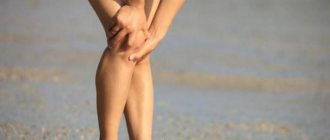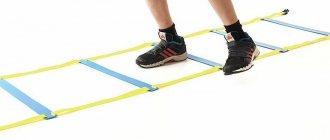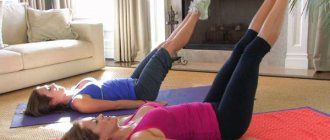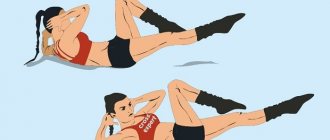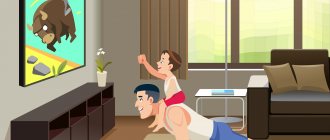Inflammation and pain in the knees can occur for various reasons, ranging from a bruise to degenerative changes in the articular cartilage. In some cases, complete rest is required for recovery, and physical activity may aggravate the condition. Therefore, before choosing a training regimen, consult with a therapist and specialists and get a diagnosis and treatment plan.
There is a high probability that your doctor will allow you to exercise: for some conditions, for example, osteoarthritis, physical activity is not only possible, but also indicated. Below we will tell you how training helps improve the condition of your knee joints and how to exercise so as not to harm yourself.
How training can be useful
A common cause of knee pain is osteoarthritis. Osteoarthritis: modern approaches to treatment is a group of diseases that affect various joint structures. It can affect any joint, but in 92% of cases it affects the knees.
Symptoms of osteoarthritis include knee pain that is relieved by rest and worsened by exercise, such as walking or descending stairs. Also in the morning you may experience stiffness and a sticky feeling in the knee.
Because of pain, people begin to avoid any physical activity. However, this only aggravates the condition, leads to excess weight gain, weakens muscles, and can cause Resistance Exercise for Knee Osteoarthritis fear of movement, anxiety and depression.
Both aerobic and resistance exercise reduce Physical Therapy Interventions for Knee Pain Secondary to Osteoarthritis A Systematic Review knee pain and improve knee function and gait.
The exercises do not specifically affect the knee joint, but they do strengthen the muscles around it. Strong leg muscles help support the knee, which reduces pressure and stress on the joints. Moreover, exercises performed with good technique help Resistance Exercise for Knee Osteoarthritis restore proper joint biomechanics, normalize muscle firing patterns, reduce pain and cartilage degradation.
Stretching exercises
Muscles often tense in response to weakness and pain. And if you start to stretch them, the situation may worsen. Stretching exercises are best started after you feel that your muscles have become stronger and more resilient.
Increasing the elasticity of the muscle helps restore the range of motion of the knee joint, reduce the load placed on it and regulate the correct direction of movement of the joint components.
Stretching while standing
IP: standing next to a support, back straight. The target leg is bent at the knee joint, hold it by the foot or ankle. Action: Pull your knee and heel down until you feel a stretch in the muscles at the front of your thigh. Fixation for 30 seconds - slowly return to IP - relaxation. Note: If you cannot reach your foot or ankle and use your hand to support your leg, use a resistance band. Options for Progression: Tighten your glutes; this will make the exercise more difficult.
Stretching while lying down
IP: lying on your stomach. The target leg is bent at the knee joint, hold it by the foot or ankle. Action: Pull your heel down until you feel a stretch in the muscles at the front of your thigh. Fixation for 30 seconds - slowly return to IP - relaxation. Note: If you cannot reach your foot or ankle and use your hand to support your leg, use a resistance band.
Side Lying Stretch
IP: lying on your side; shoulders, hips and knees are located in one straight line; the lower hand is placed where it is convenient. The upper leg is the target leg, bent at the knee joint, hold it by the foot or ankle. Action: Pull your knee and heel down until you feel a stretch in the muscles at the front of your thigh. Fixation for 30 seconds - slowly return to IP - relaxation. Note: If you cannot reach your foot or ankle and use your hand to support your leg, use a resistance band.
Kneeling stretch
IP: lunge position, kneeling. The fitness tape is wrapped around the foot of the target leg; We hold the other end of the tape in our hands. Action: Pull your foot toward your buttocks until you feel a stretch in the muscles of the front of your thigh. Fixation for 30 seconds - slowly return to IP - relaxation.
When not to start training
First of all, you should not start training if your doctor categorically prohibits you from doing so. If you are not sure of his qualifications, get advice from several specialists: their opinions may differ.
Before you start training, assess your condition. You shouldn't do Knee Arthritis: Be Cautious During These 5 Exercises if:
- the knee is swollen;
- you feel pain even at rest;
- pain makes you limp;
- the joint feels warm, the skin over it is red;
- the pain lasts more than two hours after exercise and worsens at night.
If such symptoms occur, you should definitely consult a doctor.
Quadriceps exercises: for what diseases are they necessary?
Physical therapy with an emphasis on exercises for the quadriceps muscle can be of great importance in the rehabilitation period and as a preventive measure for the development of symptoms of the disease. We will give just examples of some conditions:
Patellofemoral Pain Syndrome (PFPS) or Runner's Knee: Pain in the front of the knee is associated with impaired movement of the kneecap.
Knee bursitis: inflammation of the bursae due to increased muscle tension.
Arthrosis and arthritis of the knee joint: degenerative and inflammatory processes of cartilage and bone tissue with increased load on the articular components.
Patellar tendinitis and quadriceps tendonitis: tendon damage due to inadequate physical activity.
How to do strength training
Strength training is exercise with weights. As a rule, these exercises mean working with barbells and dumbbells or on exercise machines, but you can get a good workout at home. You can exercise with your body weight or with compact equipment - expander bands and leg weights.
What exercises to do
The main task of strength training is to pump up the muscles evenly, but not to create unnecessary stress on the knee joint. Here are a few moves you can do without risking injury to your knees.
Squats
Squats perfectly pump up the quadriceps - the muscles on the front side of the thigh, load the buttocks and core muscles, and teach the correct body position. Even deep squats do not harm the knee joint, but only if they are performed with perfect technique.
Learn
